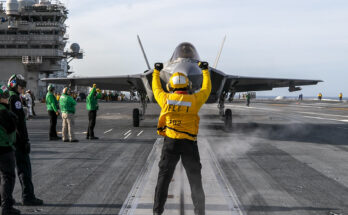by Matthew Beres, Airborne Retrofit & Modernization Analyst, Forecast International.
Commander of U.S. Naval Air Forces Vice Adm. Mike Shoemaker spoke about naval aircraft readiness at the 61st annual Tailhook Convention in Reno, Nevada, in September. He stated that international commitments and budget constraints are making it difficult to meet aviation readiness standards. He added, however, that the FY17 U.S. defense budget has $1 billion earmarked for naval aviation readiness – part of a slow push in the right direction.
An example of low fleet readiness is the F/A-18 Hornet. The U.S. Marines’ Hornet inventory is strained to the point where few planes are available for day-to-day training. The Corps may at times have only 80-90 mission-capable Hornets out of 276 available. That’s out of a requirement for 174 mission-capable Hornets. Maintenance personnel have had to resort to cannibalizing Hornets and using 3-D printers to build parts.
The U.S. is not the only nation encountering fleet readiness problems. The U.K., Germany, India, and Brazil are among other nations with low readiness issues and looming fleet retirements.
A serious and expensive incident that occurred back in January 2017 is a clear example of how low readiness and maintenance impediments are affecting the fleet. Specifically, six E-2Cs (part of the George H.W. Bush Carrier Strike Group) were rendered inoperable after mechanics improperly changed the engine oil in all six planes. Based on estimates, the cost just to replace the engines would have come in at more than $24 million. This is part of a rising trend in the U.S. Navy of a severe lack of properly trained mechanics.
High-profile, expensive mistakes such as the above could open opportunities for third party MRO suppliers. Already, companies like DynCorp are winning huge DoD contracts to assist with U.S. aircraft maintenance.
Forecast International’s Airborne Retrofit & Modernization Forecast provides operators in the military and commercial aviation sectors with the information they need to maximize their current investments rather than expand their fleets, a trend that is opening up multiple opportunities for the expansion of retrofit and modernization programs. It offers a one-stop service for tracking the status of commercial and military R&M programs in progress worldwide, and pinpoints key developments in the aviation industry that will impact the market in the future.

For 50 years, Forecast International intelligence reports have been the aerospace and defense industry standard for accurate research, analysis, and projections. Our experienced analysts compile, evaluate, and present accurate data for decision makers. FI's market research reports offer concise analysis of individual programs and identify market opportunities. Each report includes a program overview, detailed statistics, recent developments and a competitive analysis, culminating in production forecasts spanning 10 or 15 years. Let our market intelligence reports be a key part of reducing uncertainties and mastering your specific market and its growth potential. Find out more at www.forecastinternational.com



